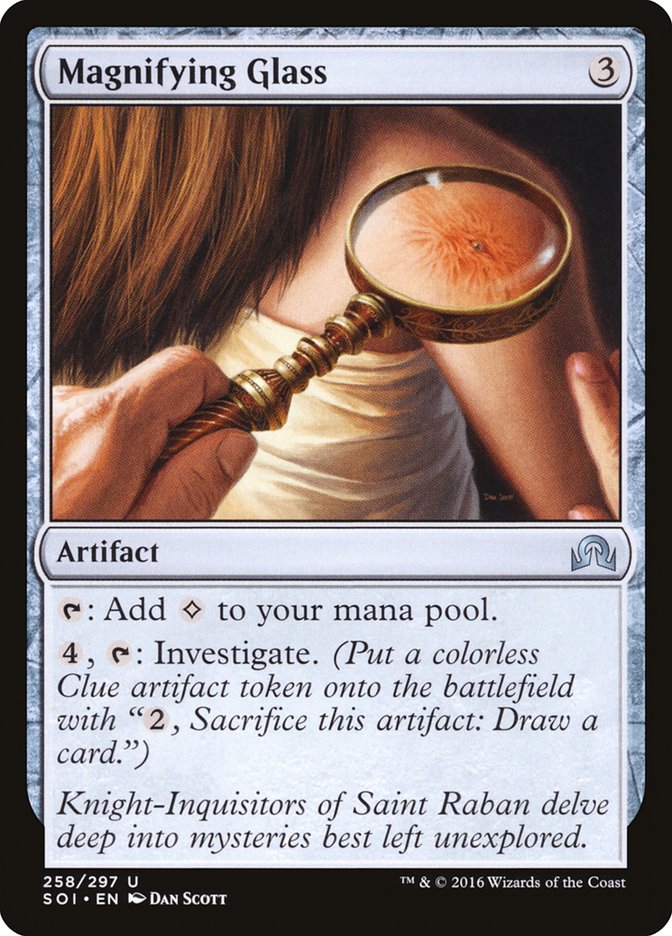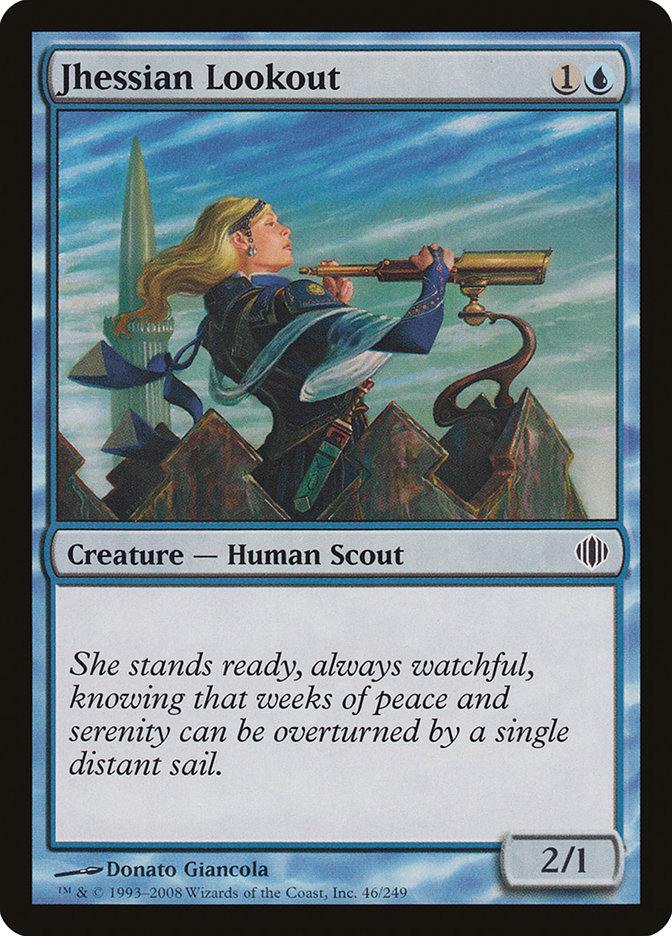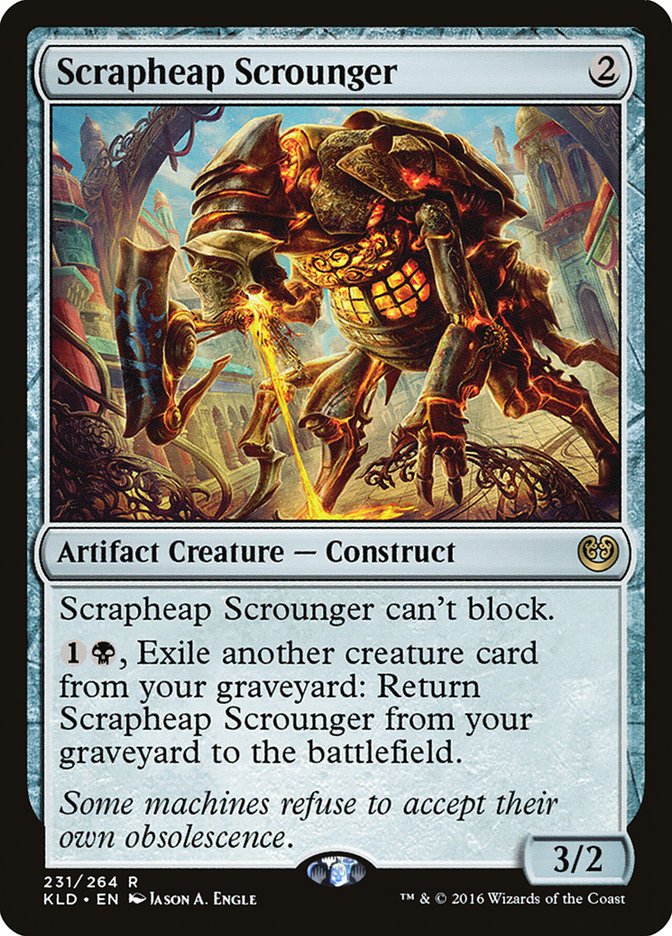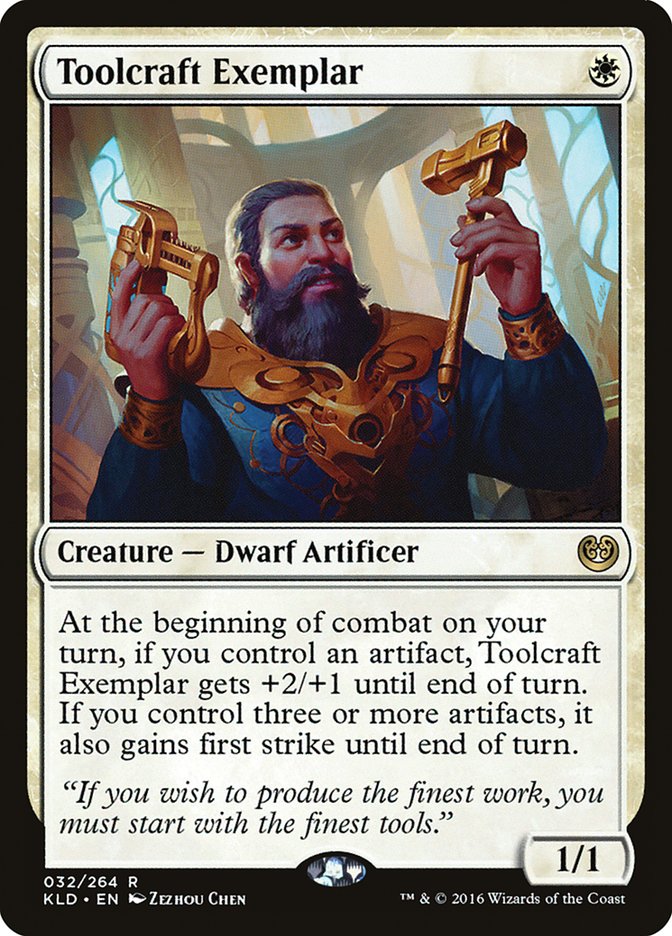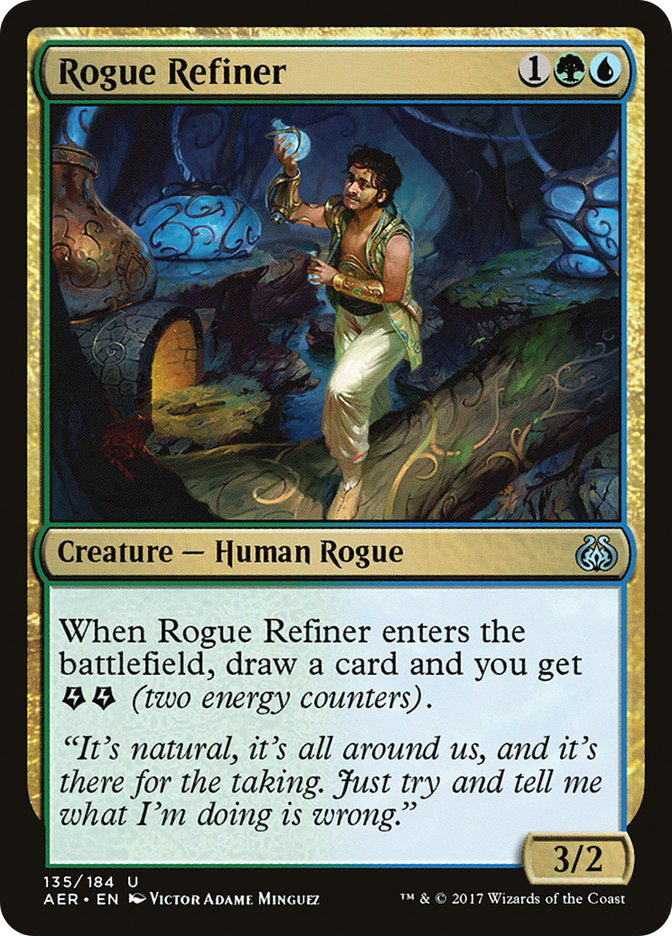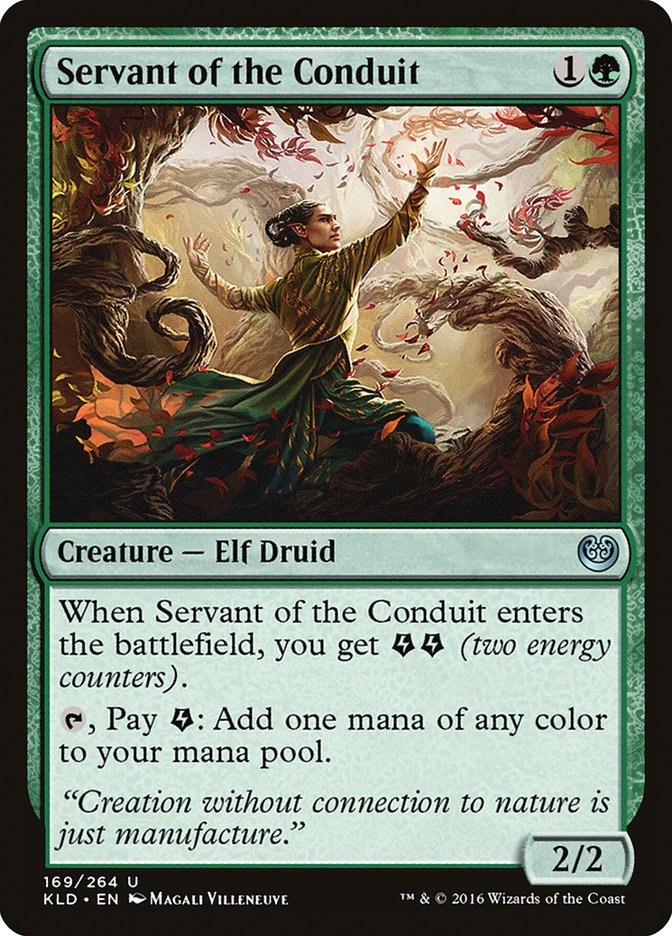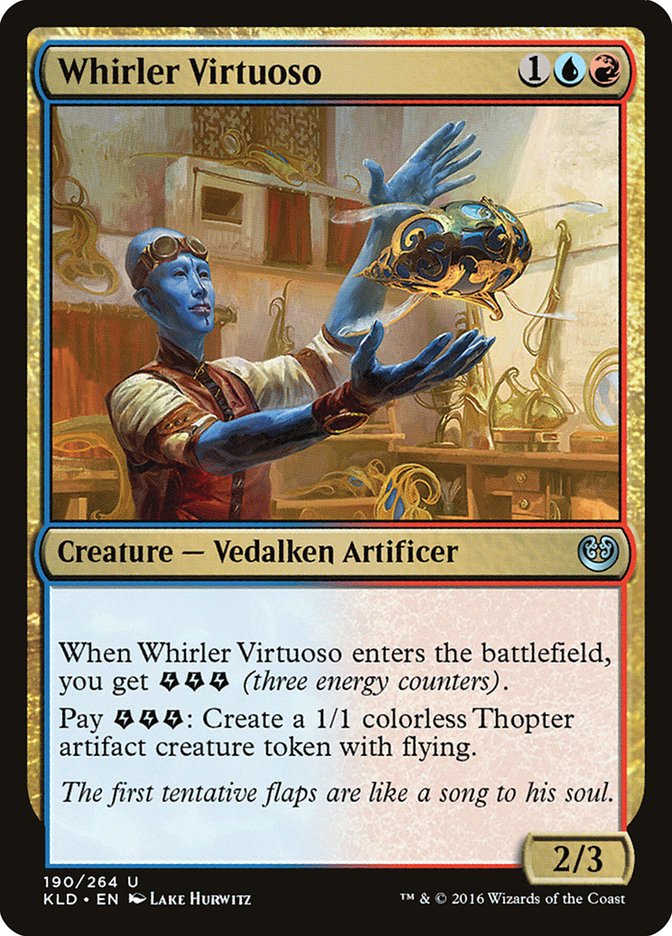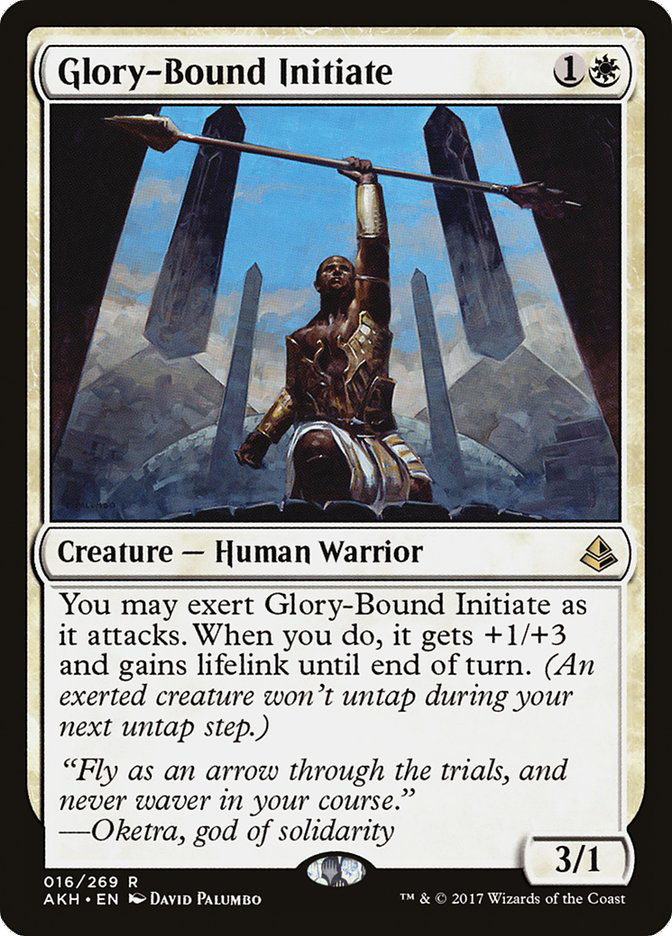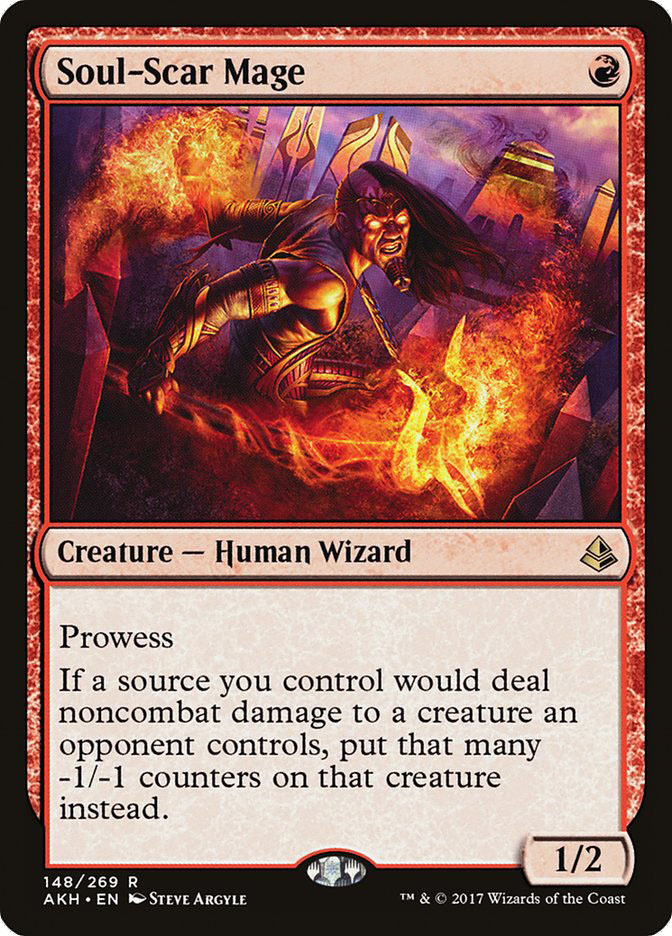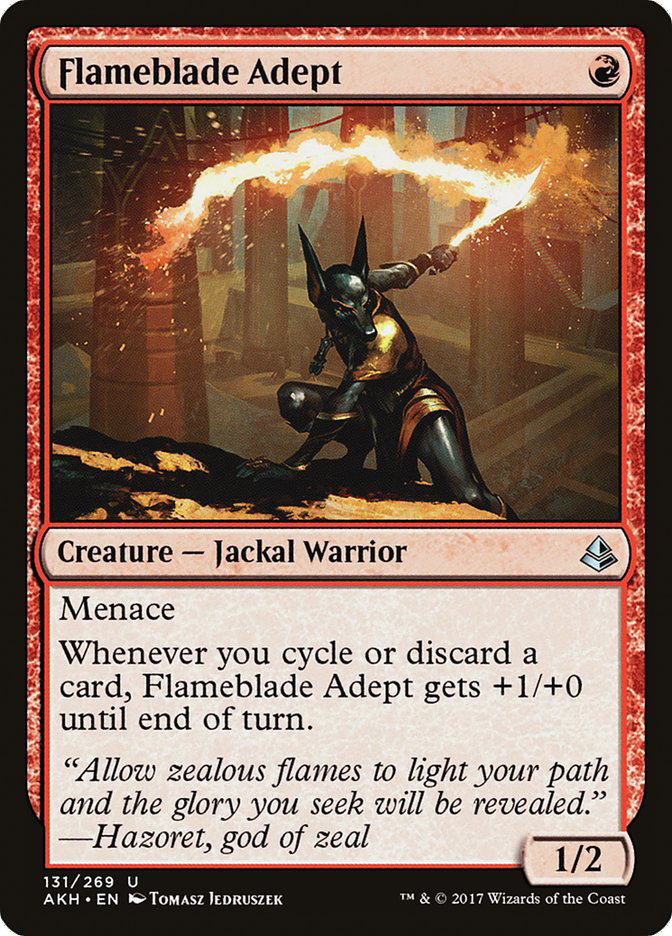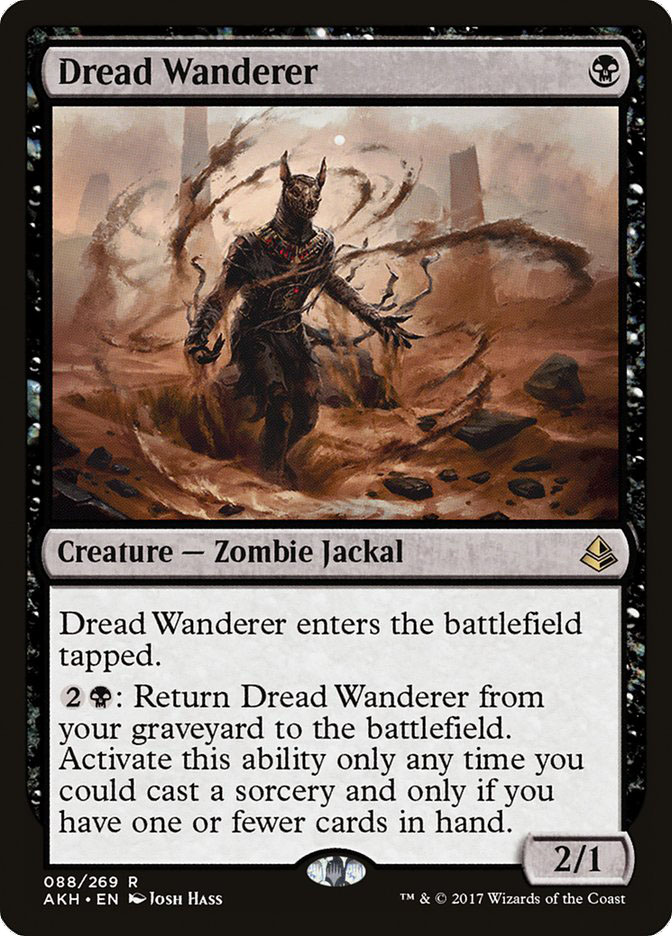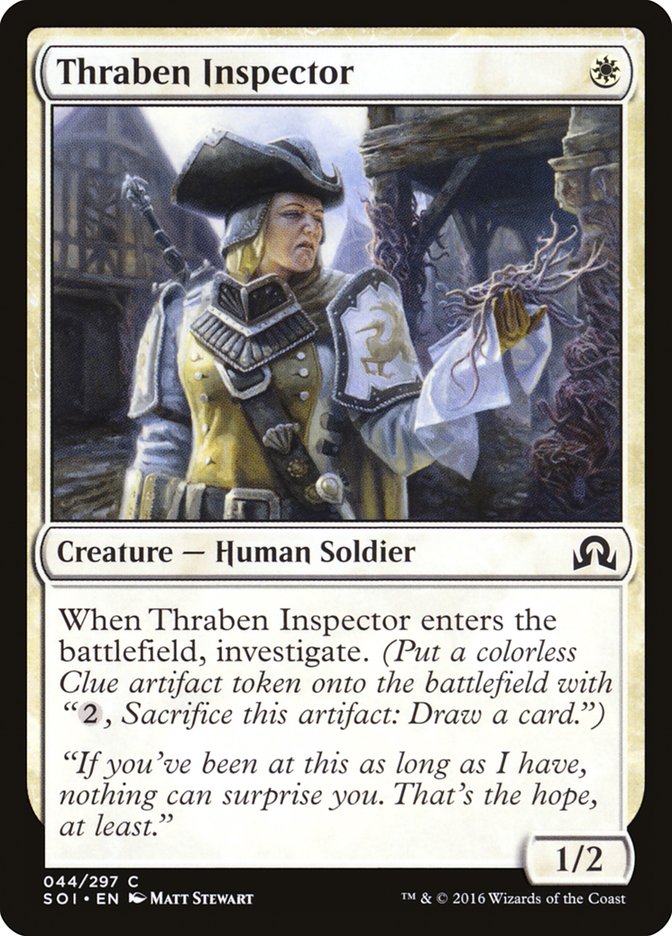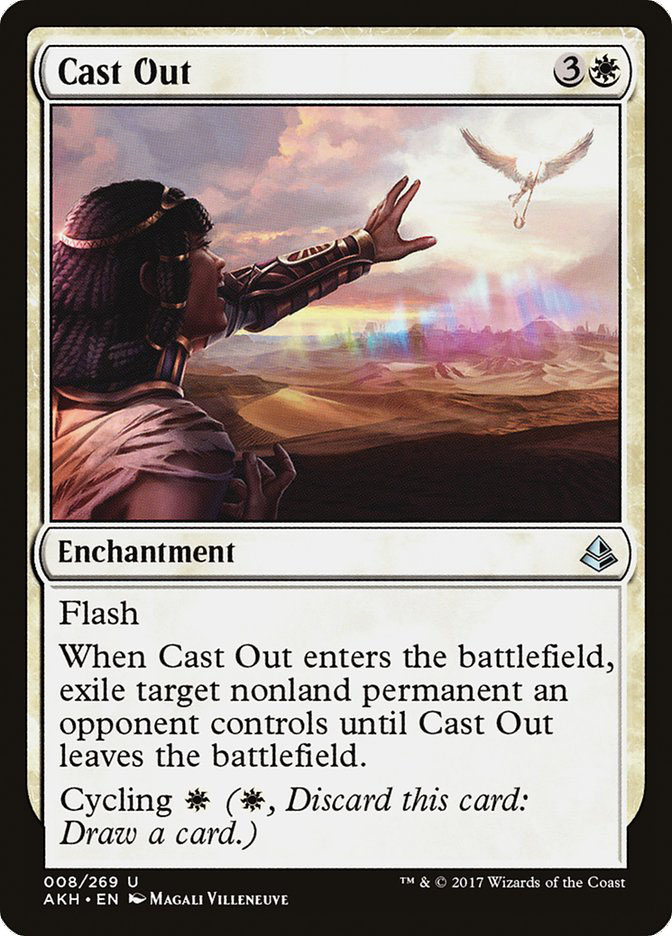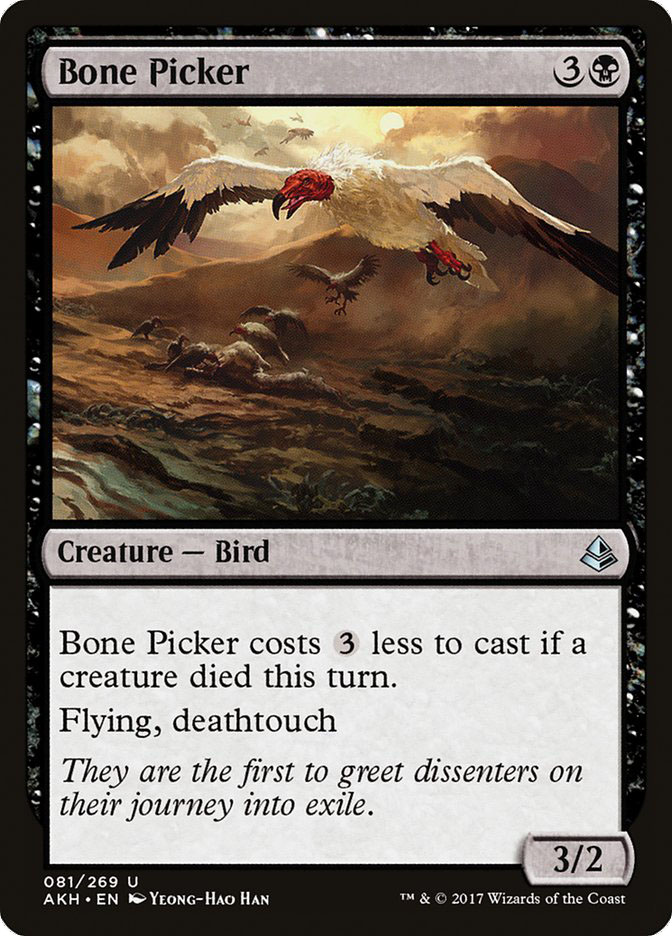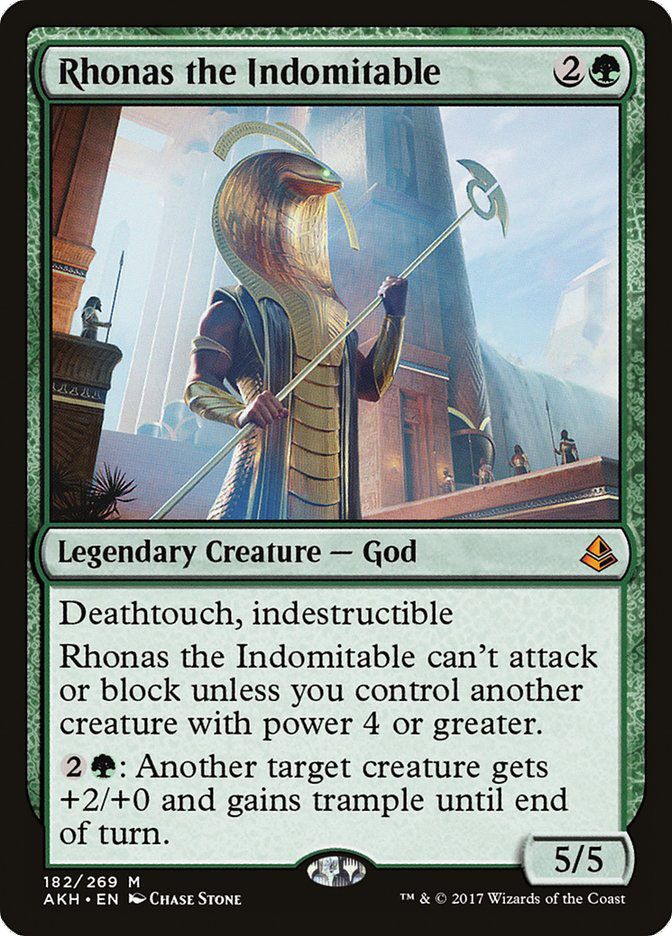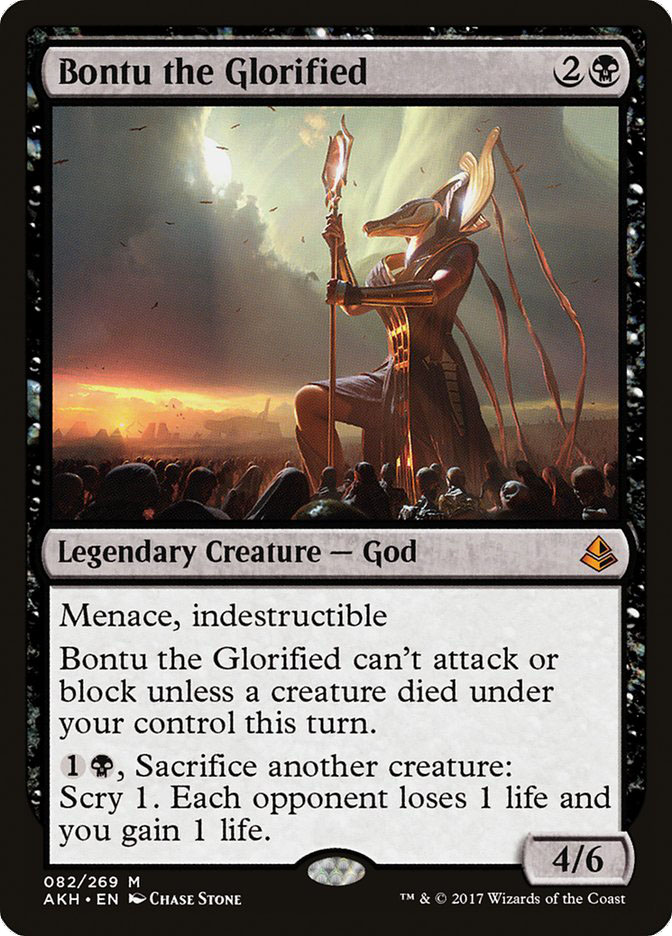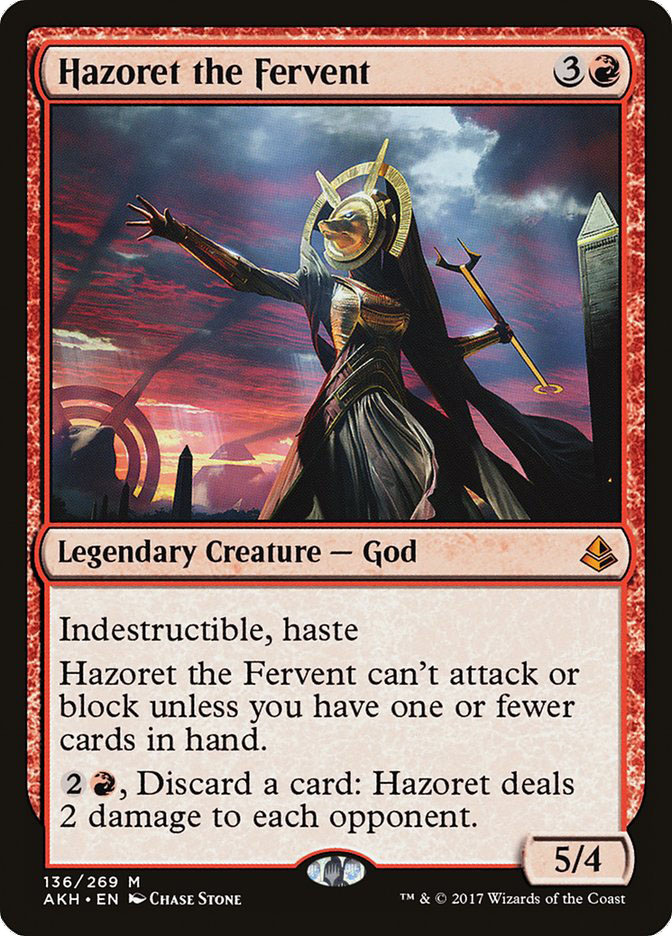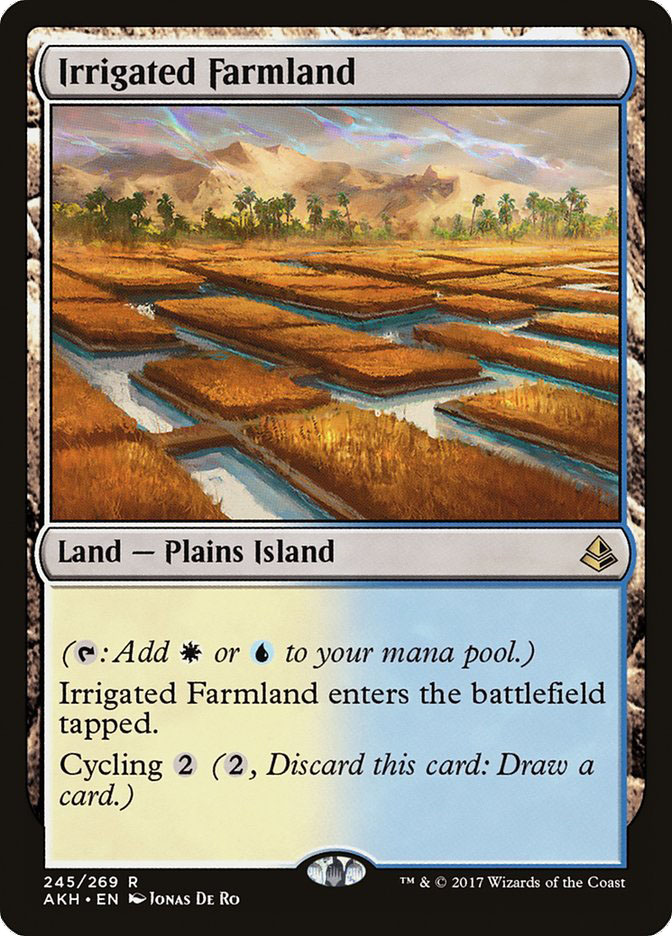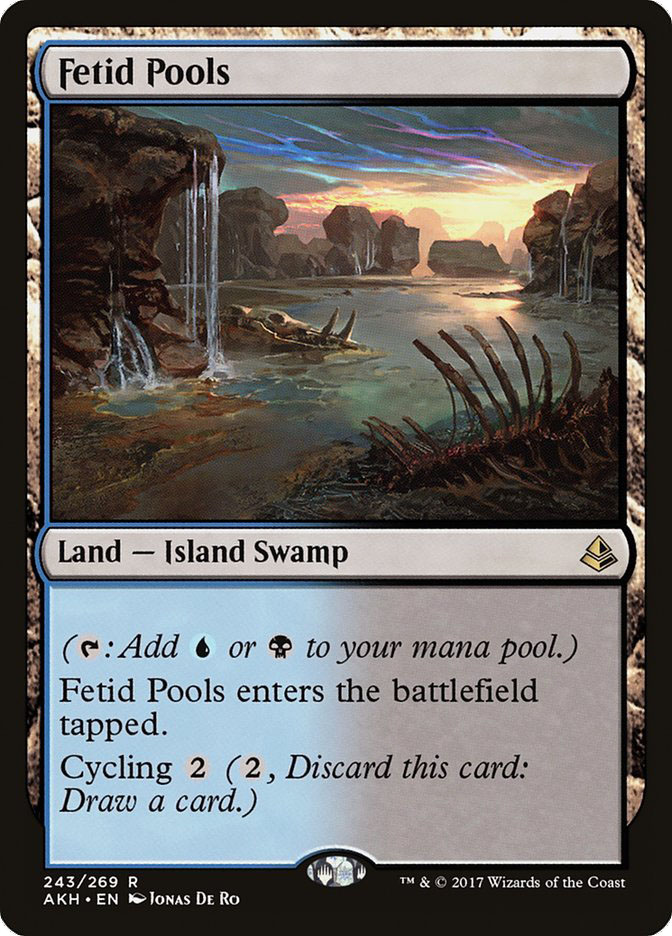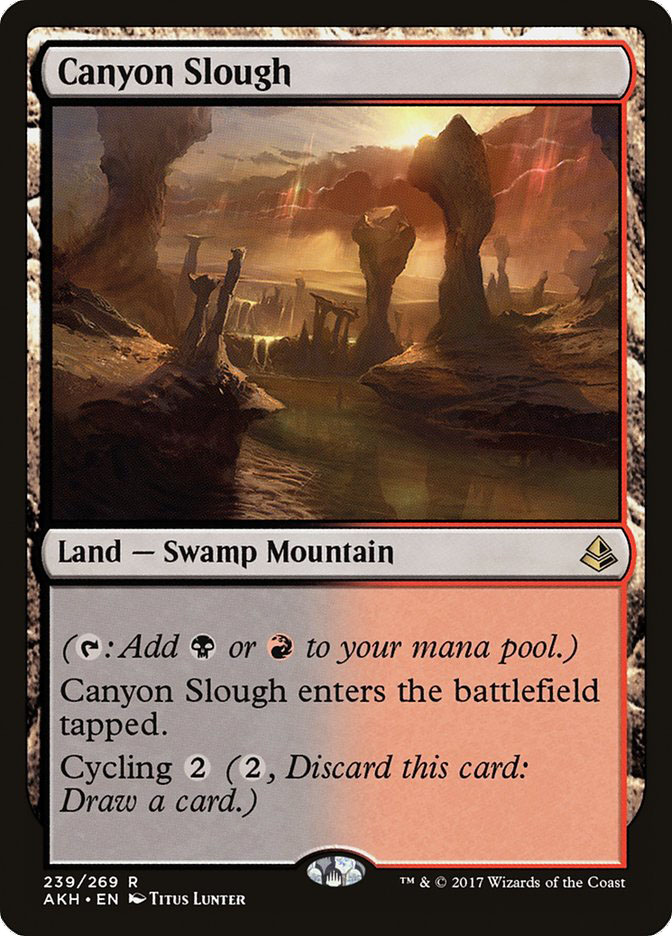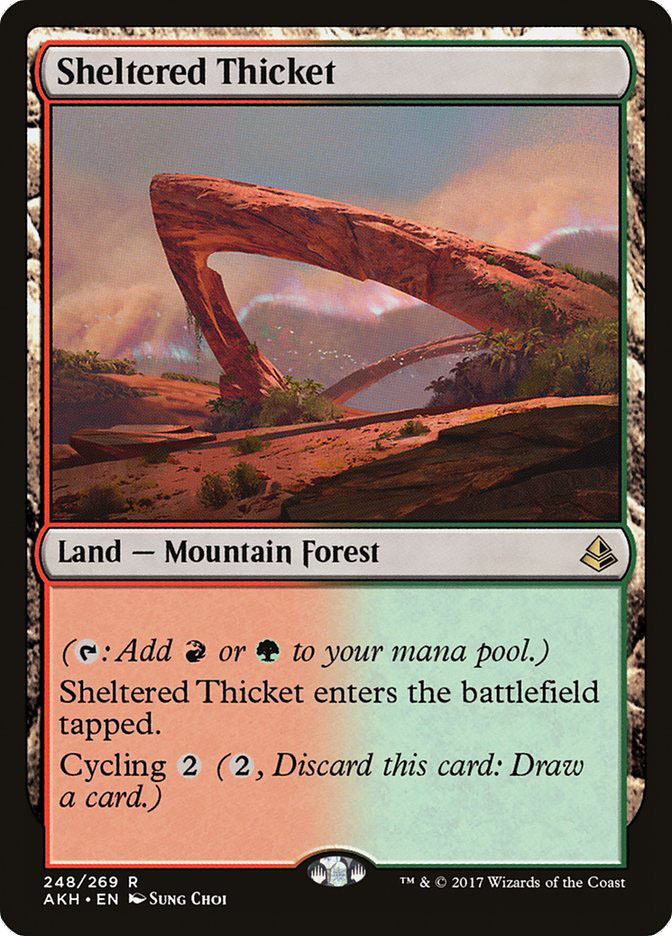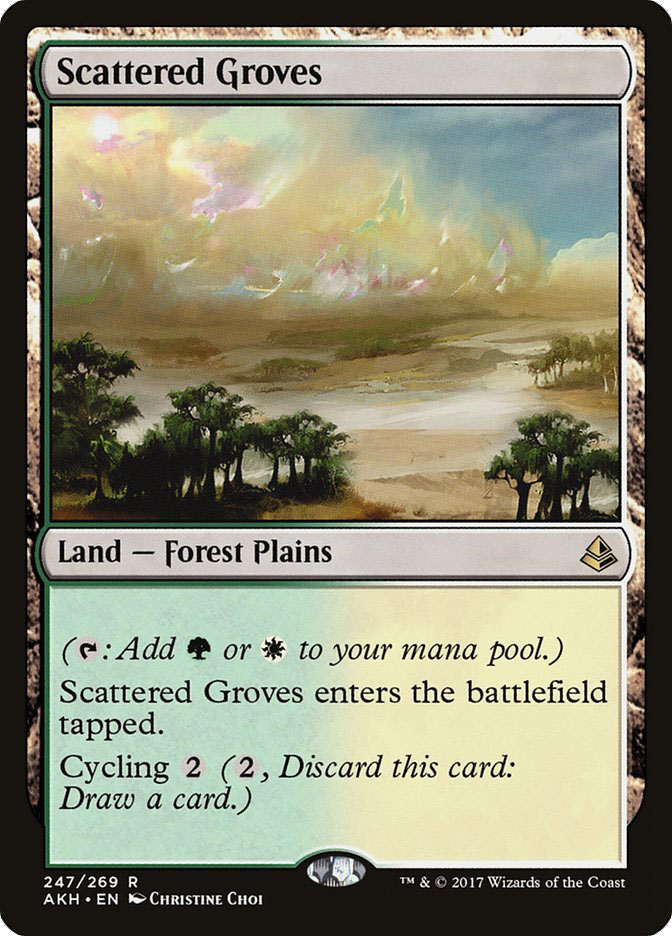All right, the wait is finally over. Amonkhet is fully previewed, and we’ve even had a chance to play some games with the new cards at our local Prereleases. The long-awaited Banned and Restricted List update has come and gone, and while it ultimately changed nothing, it certainly managed to sacrifice much of our prep time in the name of uncertainty. Here we are at last, a scant handful of days away from SCG Atlanta this Saturday. What is Amonkhet Standard going to look like?
When we talk about Standard, we focus on the micro: what individual cards are well-positioned and strong in the current environment, which card-to-card interactions we should be familiar with going into our next big tournament, that sort of thing. After the format settles a little bit and we have more information to go by, we’ll start talking about which decks are the best and which we should be playing. As the format continues to evolve, most our discussion will stay on this level, discussing the positioning of each of the format’s decks from week to week.
It’s still possible to zoom out more, to look at format-wide trends that are affecting the construction of multiple decks, but frankly, it’s not typically that useful. We tend to center our analysis around the level of decks and their positioning because that’s the level of our decisions. When we enter a tournament, we need to know what deck we should play, not why X/3 creatures are becoming less valuable across multiple archetypes.
That’s not to say that thinking about these macro trends is a useless endeavor. To the contrary, a firm understanding of the forces affecting Standard from a big-picture perspective is one of the only ways to get ahead of the metagame and start predicting instead of reacting. The problem is that, if you are concerned about your time efficiency in tournament preparation, worrying only about decks and cards will prepare you adequately in an order of magnitude less time.
When a new set gets added to the mix, however, this logic fails. Thinking on the level of decks only works when the decks are all known quantities, and when new cards are added to the format, they just aren’t. Now thinking about macro trends is an efficient use of time, as looking at how the new cards will affect the trends that were shaping Standard prior to Amonkhet will give us an idea of what to expect from Amonkhet Standard.
Better on Offense Than Defense
Let’s start with a Standard trend that is now near and dear to my heart after my G/B Constrictor deck built around exploiting this trend managed to pick up three PPTQ wins for my friends and me in the waning weeks of Aether Revolt Standard. I figured it out too late for Grand Prix New Jersey, but the key for G/B Constrictor in the Mardu Vehicles matchup was to be the aggressor. This is a counterintuitive result, as Mardu Vehicles was the best aggro deck in the format. What gives?
Turns out, Aether Revolt Standard had a defense problem. The decks were all much better at attacking than at defending. Just take a look at these staples of Mardu Vehicles:
Scrapheap Scrounger can’t block, Toolcraft Exemplar is a measly 1/1 on defense, and Gideon, Ally of Zendikar can only be a powerhouse 5/5 when attacking. This all combines to make a deck that is very good on offense but more than a little lacking on defense. My G/B Constrictor list was able to find great success by bringing the fight to Mardu, even going as far as sideboarding in Scrapheap Scroungers of my own. Counterattacking can be a great strategy when decks are overloaded on offense; after all, “the best defense is a good offense.”
But it wasn’t just Mardu Vehicles that found itself allergic to blocking. Four-Color Saheeli in Aether Revolt Standard was a deck that, strategically speaking, really wanted to block. Ideally, it would just stay alive until it could combo. But take a gander at the tools it was given:
The mana creature is a Grizzly Bear, the Elvish Visionary is a 3/2, and the token generator at least has defensive stats at 2/3, yet the tokens it makes have flying, an inefficient ability for chump blockers. These cards all do their jobs and are certainly capable of blocking but are much better-suited for getting aggressive. When combined with the incidental burn of Saheeli Rai, Oath of Chandra, and Chandra, Torch of Defiance, it’s no wonder that the Four-Color Saheeli deck won so many of its games without the combo.
The question we want to ask ourselves is as follows: is Amonkhet going to bring blocking back into the limelight, or will it turn up the volume on the importance of the red zone?
If the Exert mechanic is anything to go by, blocking isn’t going to be seeing a resurgence any time soon. Exert is one of the most anti-blocking mechanics we’ve ever seen. Creatures get turbo-charged on offense, making opposing blocks look silly, and then don’t untap for a turn cycle, making them unavailable for blocking duty. If Exert creatures see Constructed play, expect this trend of strong offense, bad defense to continue.
Amonkhet also looks like it might contain the tools for true aggro decks. Every aggressive deck in Aether Revolt Standard was closer to a midrange deck than a classical aggro deck, but these powerful new one-drops will give rise to a true aggro deck. Expecting a true aggro deck to have a good defensive plan is just silly, so it seems safe to say that all-in-all Amonkhet looks to be continuing the trend of Standard decks being better on offense than defense. I’m looking to play a deck that can weather an initial onslaught and then counterattack in force. More on that idea later.
Planeswalkers
Now for a trend I’ve written a little on before: the rise of planeswalkers in Aether Revolt Standard. Four-Color Saheeli started off as a half-combo, half-Aetherworks Marvel deck, looking to use Aetherworks Marvel as a source of card advantage and card selection in long, grindy games. In the later stages of the format, Chandra, Torch of Defiance had proven herself to be the superior card in that role for the Four-Color Saheeli decks.
Mardu Vehicles originally was a hyper-aggressive deck, playing the playset of Veteran Motorist and even some copies of Depala, Pilot Exemplar. By the end of the format, Mardu Vehicles had dropped these cards in favor of Walking Ballista and Archangel Avacyn, cards that supported the sideboard plan of becoming a planeswalker control deck. For the two best decks in Aether Revolt Standard, planeswalkers were the name of the game.
What was it about Aether Revolt Standard that made planeswalkers so good? Mostly, just that they were very hard to deal with. Burn spells were at an all-time low in Standard and none of the good removal spells targeted planeswalkers. That leaves just combat as the method of getting rid of planeswalkers, and Aether Revolt Standard was deficient there too. Flying, haste, and trample, the three keywords we turn to for dealing with planeswalkers in combat, saw very little play. As a result, it was normal to watch planeswalkers stay alive for multiple turns behind weak creatures on chump block duty. Thraben Inspector, anyone?
Amonkhet is poised to end the reign of planeswalkers in Standard. There may be no excellent new burn spells and Never//Return might only a slightly better Ruinous Path, but the direct option for dealing with planeswalkers is back on the table.
This is the planeswalker kill spell we’ve been looking for. No matter how far behind you have fallen on the battlefield, this will always answer a planeswalker at instant speed. And if that’s not necessary right now, its cycling cost is super-cheap. Still, good one-for-one removal spells have never been what keeps planeswalkers in check. That duty falls to combat, and Amonkhet combat is going to look very different.
Glorybringer is the poster child for the revolution against planeswalkers. Flying, haste, four power, the ability to get a blocker out of the way…this Dragon has it all when it comes to taking out planeswalkers. The only downside to Glorybringer is being a tad slow to deal with a Gideon, Ally of Zendikar when on the draw, allowing an on-curve Gideon two activations before getting attacked down. Still, Glorybringer means that off-curve planeswalkers can’t dominate the game the way they did in Aether Revolt Standard, and that’s a big change.
Tom Ross wrote his Premium article last week on the potential of this overlooked uncommon. I’ll leave the details to him, but suffice it to say that I agree that this card will likely see some serious play in this Standard format. If so, that’s another huge strike against planeswalkers. Defending a planeswalker in the air is much harder than defending it on the ground, and if a 3/2 flyer is seeing heavy play, planeswalkers will be in a much worse spot come SCG Atlanta than they were the week before.
Last up in the Amonkhet war on planeswalkers are the new God cards. Now that they are all previewed, to me these cards look designed to beat up on planeswalkers. With the sole exception of Oketra the True, every single God either has a combat keyword that makes it a great attacker into planeswalkers or has an activated ability that is excellent against them. Hazoret the Fervent even has both!
All in all, the trend of planeswalkers being invulnerable is looking like it will reverse course with Amonkhet. Bear in mind that the magnitude of this effect remains to be seen. I’m confident that planeswalkers will see less play than they did in Aether Revolt Standard, but how much less is a question that only time will answer.
Mana Tensions and Stumbling
Aether Revolt Standard had a huge tension around mana. The format was hugely aggressive, which meant stumbling due to a missed land drop or a land entering tapped at an inopportune time was often a game-losing issue. This incentivized playing more lands than you otherwise would want to, since stumbling was punished so severely. But then players would find themselves flooded in the late-game. Mana sinks like Walking Ballista alleviated the problem to some degree, but not enough. Enter Amonkhet.
The new cycling dual lands will go a long way towards easing this tension. Their existence will allow players to play a land count high enough to not risk stumbling in the early-game while still feeling like a lower land count deck in the late-game via cycling. Mana sinks are going to have reduced importance, as cycling will be the main method of using mana in the late game. Expect to see less play of Walking Ballista (if only a little less, as the card is still very good).
Even aside from the new cycling duals, all of Amonkhet‘s cycling cards are going a long way towards fixing the mana problems of the format. Increased quantities of card flow allow players to find the specific cards they need when they need them, which decreases the volume of games decided by stumbles. Overall, expect Amonkhet Standard games to last half a turn to a turn longer on average.
Over time, decks will likely start to extend on this trend, going higher and higher on the curve to make better use of the increased land count that cycling allows them to play. For Week 1, however, I doubt we will see this trend go quite that far. Something to look forward to.
Where to Go From Here
With all of this in mind, here are my recommendations for SCG Atlanta and other Week 1 Amonkhet Standard events.
If you’re interested in playing Four-Color Saheeli this weekend, take a look at the old Aetherworks Marvel / Elder Deep-Fiend versions of the deck. I’m not super-interested in playing a planeswalker-heavy version of Four-Color Saheeli Week 1, as I expect planeswalkers to be having a rough go of it. Further, having access to Elder Deep-Fiend allows you to take advantage of the offensive nature of opposing decks, exploiting their weak defense on your way to stealing wins without finding the combo. Given the expected increase in decks that only play one way (offensively), Elder Deep-Fiend seems like a good place to be this weekend.
Now, if you’re more of a Mardu Vehicles player, look into moving away from the planeswalker versions of the deck and go back to a more aggressive, Veteran Motorist style. Gideon, Ally of Zendikar is the only planeswalker I want to play in the 75 in order to best dodge the anticipated planeswalker hate. Glorybringers of our own at the top end of the curve sound quite appealing and complement the Veteran Motorist style of Mardu Vehicles quite nicely while allowing us to punish players still trying to play lots of planeswalkers.
I have bad news for Torrential Gearhulk fans: I don’t think Week 1 is a great time to be casting our beloved mega-Snapcaster Mage. The paradigm shift with regards to mana is what scares me for control strategies this weekend. Control really needs to know what kind of curve it can expect to face, and the addition of the new cycling duals to the format means we really can’t be sure of what is going to happen. I would wait a week or two before dusting off those Torrential Gearhulks.
And finally, the deck near and dear to my heart, G/B Constrictor. To no one’s surprise, I think G/B Constrictor is well-positioned for Week 1 (yes, I’m probably biased). However, I do believe it’s the perfect deck to take advantage of all these trends. It doesn’t play many planeswalkers itself, yet is looking to incorporate Bone Picker and get to attacking down planeswalkers. It is perhaps the best counterattacking deck I’ve ever seen, very good at weathering the storm before striking forth on its own. Give it a shot; you won’t regret it.
Creatures (18)
Planeswalkers (4)
Lands (22)
Spells (16)
Sideboard

Creatures (19)
Planeswalkers (4)
Lands (25)
Spells (12)
Sideboard

Creatures (25)
- 4 Catacomb Sifter
- 2 Verdurous Gearhulk
- 4 Winding Constrictor
- 3 Rishkar, Peema Renegade
- 4 Walking Ballista
- 2 Hapatra, Vizier of Poisons
- 2 Rhonas the Indomitable
- 4 Bone Picker
Planeswalkers (2)
Lands (24)
Spells (9)



